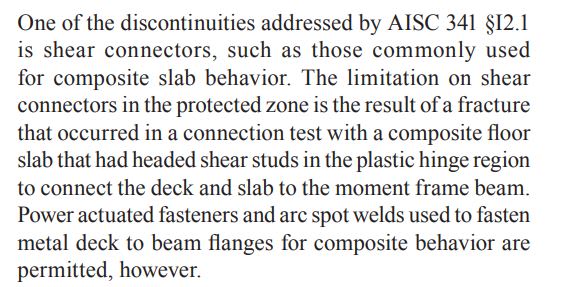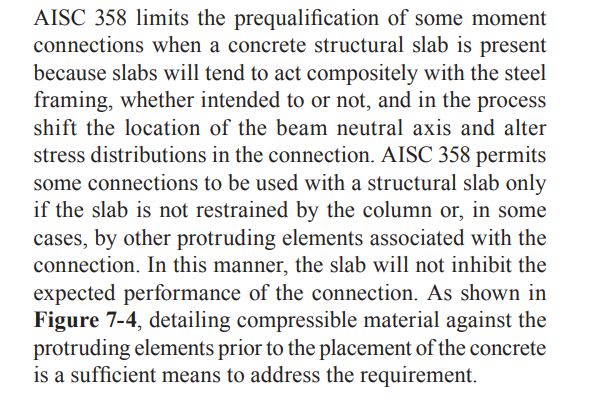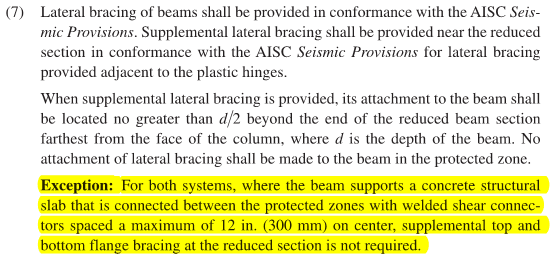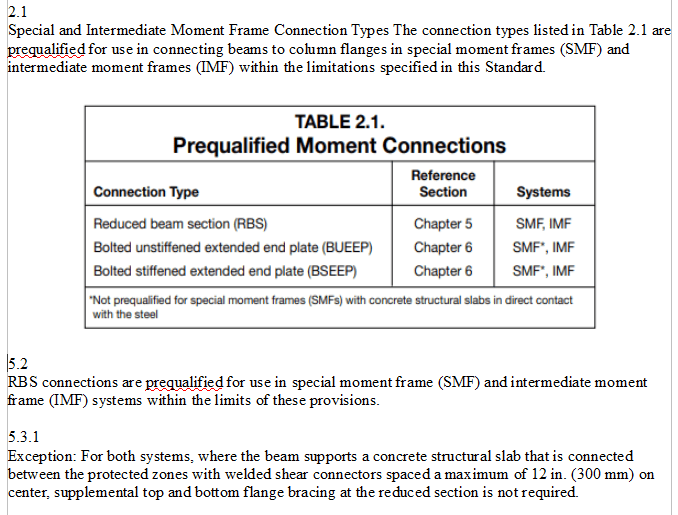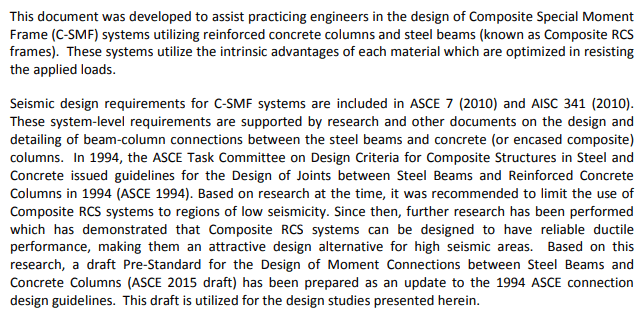Eren Jaeger
Structural
- Dec 28, 2018
- 28
Hi!
I have a metal deck slab over main steel beams (supported by columns) and secondary steel beams (supported by main beams). My questions are:
1. Is it required for all the steel beams, main and secondary, to be fully or partially composite with the metal deck slab? I read from AISC that for special moment frames, composite action for steel beams that are part of this moment frame are only allowed to resist gravity loads. If that's the case, then I would prefer the secondary beams to be the one that only acts compositely and for the main beams (which are part of my special moment frame) to be noncomposite. Is that okay?
2. If it is allowed to choose some to be noncompostite, should there be a shear connector also for noncomposite action between steel beam and metal deck or are metal decks just directly placed above steel without any shear connectors to achieve noncomposite action?
3.1. If there really is no shear connectors required for noncomposite action, is it okay during construction? I think we still need to somehow hold the metal deck in place above the main steel beam to avoid movement during concrete pouring?
3.2. If there really is no shear connectors required for noncomposite action, then the metal deck will no longer provide lateral support for the compressive top flange?
Thank you.
I have a metal deck slab over main steel beams (supported by columns) and secondary steel beams (supported by main beams). My questions are:
1. Is it required for all the steel beams, main and secondary, to be fully or partially composite with the metal deck slab? I read from AISC that for special moment frames, composite action for steel beams that are part of this moment frame are only allowed to resist gravity loads. If that's the case, then I would prefer the secondary beams to be the one that only acts compositely and for the main beams (which are part of my special moment frame) to be noncomposite. Is that okay?
2. If it is allowed to choose some to be noncompostite, should there be a shear connector also for noncomposite action between steel beam and metal deck or are metal decks just directly placed above steel without any shear connectors to achieve noncomposite action?
3.1. If there really is no shear connectors required for noncomposite action, is it okay during construction? I think we still need to somehow hold the metal deck in place above the main steel beam to avoid movement during concrete pouring?
3.2. If there really is no shear connectors required for noncomposite action, then the metal deck will no longer provide lateral support for the compressive top flange?
Thank you.

